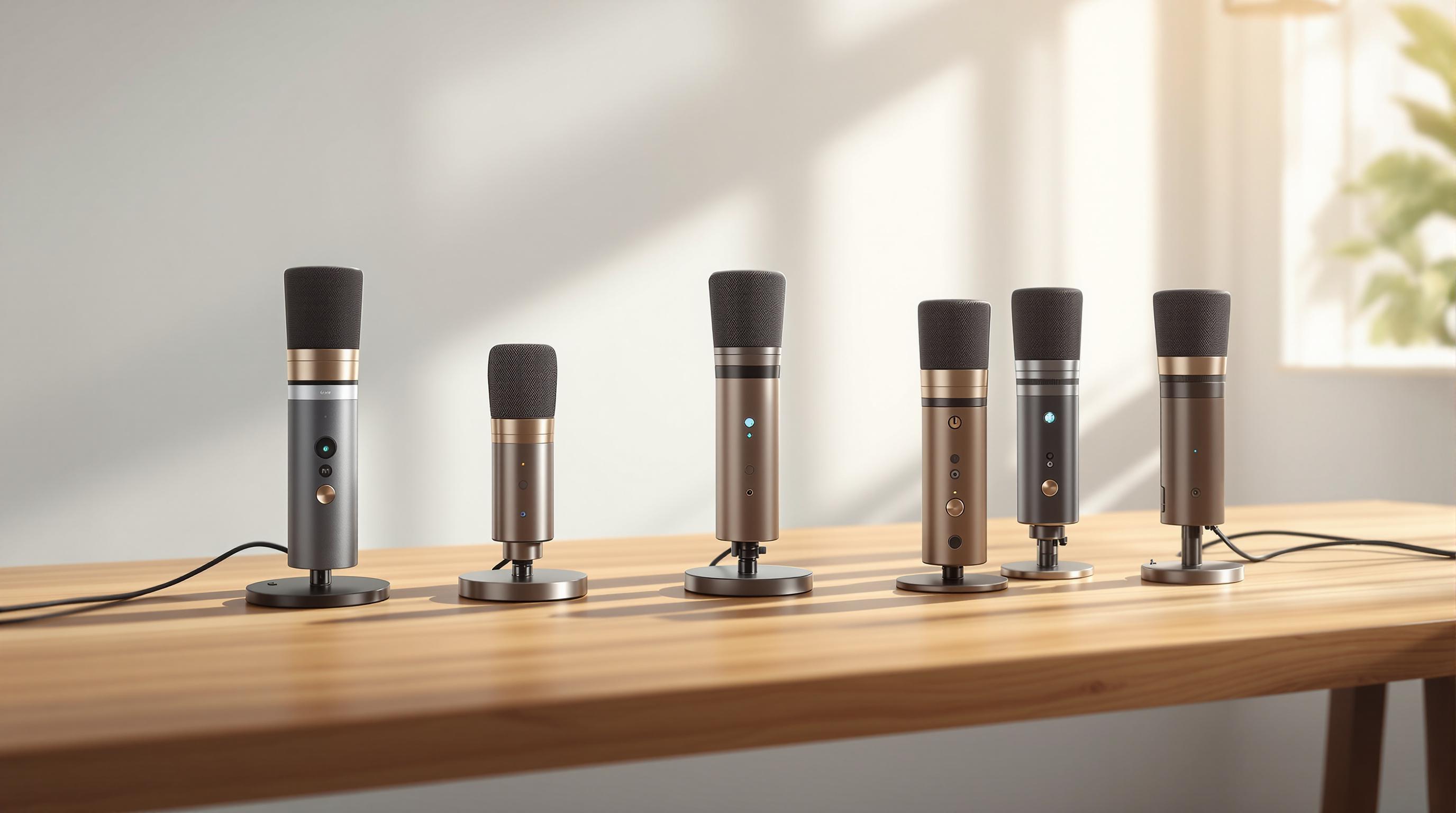Eco-friendly soundproofing materials, like recycled cotton or cork, offer a safer and more sustainable alternative to traditional options like fiberglass and foam. They reduce noise, improve air quality, and have a lower environmental footprint. While traditional materials are effective, they often pose health risks and are less eco-conscious.
Key Points:
- Traditional Methods: Fiberglass, mineral wool, and foam are effective but may release harmful chemicals and aren't biodegradable.
- Eco-Friendly Options: Recycled cotton, cork, and sheep's wool are safer, often made from renewable or recycled materials, and support healthier indoor spaces.
- Cost: Green materials can be pricier upfront but may save money long-term through tax incentives and better durability.
- Performance: Traditional methods excel at isolating low frequencies, but eco-friendly options are catching up in effectiveness.
Quick Comparison:
| Factor | Green Soundproofing | Traditional Soundproofing |
|---|---|---|
| Acoustic Performance | Effective for most needs | Superior for challenging frequencies |
| Cost | Higher upfront, potential long-term savings | Lower upfront cost |
| Health & Safety | Non-toxic, low VOC emissions | May emit chemicals, requires careful handling |
| Environmental Impact | Made from recycled/renewable materials | Higher ecological footprint |
| Installation Complexity | Easier and safer | May require protective gear |
For podcasters and home studio users, eco-friendly materials are a practical choice for creating healthier, quieter spaces. Balancing cost and performance is key - combine green materials for critical areas and traditional ones where budget is tight.
Standard Soundproofing Materials and Methods
Common Standard Materials
When it comes to traditional soundproofing, several materials have stood the test of time. Fiberglass insulation is a popular choice due to its affordability and effectiveness. It's typically installed in wall cavities to help reduce noise transmission between spaces.
Another widely used material is mineral wool, including rock wool. Known for its fire-resistant properties and ability to dampen sound, it’s a favorite in environments like podcast studios and home theaters, where sound control is crucial.
Mass Loaded Vinyl (MLV) is another go-to option. This dense material acts as a sound barrier and is often placed between layers of drywall or used as heavy drapes. Its weight and density make it effective for blocking sound in various settings.
Synthetic acoustic foams, often shaped into pyramids or wedges, are designed to absorb mid- to high-frequency sounds. While they’re affordable and easy to install, they’re less effective at reducing lower-frequency noise, which can limit their overall performance.
Gypsum board, or drywall, is a staple in many soundproofing projects. While standard drywall provides only modest sound reduction, specialized panels with built-in damping layers offer improved noise control.
Despite their effectiveness, these materials come with some environmental and health concerns.
Planet and Health Concerns
Traditional soundproofing materials often pose challenges for both the environment and human health. For example, the production of fiberglass insulation requires significant energy and emits carbon. Additionally, the binders used during manufacturing can continue to release chemicals into the air even after installation.
Synthetic acoustic foams are another concern. They can release volatile organic compounds (VOCs) that may affect indoor air quality, potentially causing issues like headaches or respiratory irritation, especially in poorly ventilated spaces.
Disposal is another major issue. Materials like fiberglass and mineral wool are not biodegradable, meaning they often end up in landfills, where they can linger for years. Some barrier products also contain additives that make safe disposal during renovations or demolitions more complicated.
The extraction of non-renewable resources used to produce these materials further exacerbates environmental concerns. Mining and harvesting processes can disrupt natural habitats, adding to the ecological footprint of these products.
Worker safety during installation, along with the long-term environmental impact of non-biodegradable materials, highlights the need for more sustainable soundproofing solutions.
Green Soundproofing: Materials and Benefits
Green Soundproofing Materials
Green soundproofing relies on materials that not only block noise but also minimize environmental impact. One standout is recycled cotton insulation, crafted from post-consumer denim and textiles. It absorbs sound effectively while giving new life to waste materials. Similarly, sheep’s wool offers a renewable and natural solution. It not only dampens sound but also regulates humidity, all without the need for synthetic additives.
Other options include cork panels, recycled PET panels, and natural fiber panels, all of which combine functionality with sustainability. Cork, for instance, is harvested from cork oak trees without harming them. Its unique cellular structure traps sound waves, making it particularly effective for mid-frequency noise. Recycled PET panels transform discarded plastic bottles into efficient sound absorbers, keeping waste out of landfills. Meanwhile, natural fiber panels made from hemp, flax, or coconut coir provide a biodegradable alternative to synthetic foams. These panels can even double as decorative design elements, blending style with practicality.
Eco-conscious noiseproofing compounds are also worth mentioning. These water-based, non-toxic adhesives dampen sound effectively while promoting a healthier indoor environment. Together, these materials showcase how soundproofing can align with sustainable living.
Planet and Health Benefits
The benefits of green soundproofing extend beyond noise reduction. Many of these materials require less energy to produce, resulting in smaller carbon footprints. For example, recycled cotton insulation uses significantly less energy compared to traditional fiberglass. Natural options like sheep’s wool even absorb carbon during their growth phase, adding an extra layer of environmental benefit.
These materials are also biodegradable, meaning they naturally decompose after use instead of lingering in landfills. Additionally, they emit low levels of volatile organic compounds (VOCs), which improves indoor air quality in homes and workplaces alike.
Green soundproofing materials contribute to sustainable building practices, often helping projects earn LEED credits in categories like materials, resources, and indoor environmental quality. Their non-toxic nature also makes installations safer for construction workers, reducing respiratory risks.
Some materials, like sheep’s wool, offer added perks such as moisture management. It effectively balances humidity levels while maintaining its insulating properties, making it a versatile choice for both soundproofing and energy efficiency.
Performance Comparison: Green vs. Standard Soundproofing
Comparison Table: Key Metrics
When deciding between eco-friendly and traditional soundproofing options, several factors come into play: acoustic performance, cost, ease of installation, durability, environmental impact, and health considerations. The table below breaks down how each option performs across these key areas:
| Factor | Green Soundproofing | Traditional Soundproofing |
|---|---|---|
| Acoustic Performance | Provides solid sound absorption for voice recording but may struggle in extreme conditions. | Delivers reliable and consistent sound isolation, especially with challenging frequencies. |
| Cost | Ranges from budget-friendly to high-end depending on materials. | Typically offers lower upfront costs with a proven history of effectiveness. |
| Installation Complexity | Easier and safer to install due to lightweight, non-toxic materials. | May require extra precautions as some materials can release irritants during setup. |
| Lifespan | Often long-lasting, with some products maintaining or improving soundproofing over time. | Effective initially, though certain materials (like foams) may degrade with extended use. |
| Environmental Impact | Made with renewable or recycled components, reducing its ecological footprint. | Often relies on non-renewable materials, leading to a higher environmental impact. |
| Health & Safety | Low in VOCs, creating a safer and healthier indoor environment. | Some materials may emit chemicals or particulates, requiring careful handling. |
This comparison highlights the trade-offs, helping users make informed decisions based on their specific needs and priorities.
Strengths and Weaknesses
Eco-friendly soundproofing materials bring notable benefits to the table. They are designed to reduce chemical emissions, creating healthier spaces - an essential factor for podcasters and others spending long hours in a recording environment. Their lighter weight and safer installation process also make them an appealing choice for DIY projects.
On the other hand, traditional soundproofing methods excel in performance, particularly in dealing with challenging frequencies. Their consistent results make them a trusted option for spaces requiring top-tier noise isolation. However, these materials can pose health risks due to potential irritants and may degrade over time, impacting both their longevity and safety.
Ultimately, the decision comes down to what matters most: prioritizing health and sustainability or achieving peak acoustic performance. For podcasters and home studio users, the promise of cleaner indoor air often makes green soundproofing an attractive option. Meanwhile, those dealing with significant low-frequency noise may lean toward traditional materials for their unmatched sound isolation.
Interestingly, as technology progresses, eco-friendly options are closing the performance gap with traditional soundproofing. Many sustainable products now rival conventional materials in effectiveness, offering a solid choice for those seeking both functionality and environmental responsibility. These evolving advancements help shape decisions, which will be explored further in the next section.
sbb-itb-cdb7710
U.S. Regulations and Green Standards
Key U.S. Standards and Certifications
In the U.S., strict standards govern soundproofing materials to ensure they meet guidelines for indoor air quality, chemical safety, and environmentally conscious practices. These regulations play a crucial role in helping builders and podcasters choose materials that align with legal and environmental requirements.
LEED v4 (Leadership in Energy and Environmental Design) is a widely recognized certification that evaluates materials based on their chemical emissions, recycled content, and regional sourcing. It prioritizes adherence to regulatory standards, focusing less on performance and more on sustainability.
The California Department of Public Health's Standard Method v1.2 enforces strict limits on chemical emissions, such as formaldehyde and volatile organic compounds (VOCs). Materials undergo rigorous testing to ensure they meet these thresholds, promoting safer indoor air quality.
The EPA's Comprehensive Procurement Guidelines encourage the use of insulation and other materials with recycled content in federal projects. This initiative supports environmentally responsible building practices.
GREENGUARD Gold certification, managed by UL Environment, highlights products with low chemical emissions. To earn this certification, materials must meet stringent VOC limits, contributing to healthier indoor spaces. These certifications collectively provide a framework for choosing green products that meet U.S. regulatory demands.
How Green Products Support Compliance
Eco-friendly soundproofing materials are designed to align with these standards, making it easier for builders and podcasters to meet federal and state regulations. These products release significantly fewer VOCs compared to conventional options, addressing one of the main compliance hurdles.
Sustainable materials, such as those made from recycled fibers or reclaimed resources, help meet recycled content requirements outlined in various certification programs. Many of these products also comply with fire safety standards like ASTM E84, offering a dual benefit of safety and sustainability.
Additionally, green soundproofing materials often come with detailed environmental declarations, simplifying the documentation process for compliance. By sourcing materials regionally, these products reduce transportation-related environmental impacts while contributing to certification goals.
For podcasters setting up home studios, using certified eco-friendly materials not only creates a healthier space but also ensures compliance with regulations. For more tips on building a compliant and effective recording setup, visit Podcast Launch Strategy.
Conclusion: Choosing the Right Soundproofing Method
Key Takeaways
When deciding on soundproofing methods, it's essential to weigh factors such as performance, cost, environmental impact, and regulatory requirements. Traditional materials like fiberglass and foam are reliable for acoustic performance but raise concerns about non-biodegradability and chemical emissions that may affect indoor air quality.
As outlined earlier, each method has its strengths and trade-offs. Eco-friendly alternatives offer a more sustainable approach. For instance, recycled cardboard acoustic materials reduce greenhouse gas emissions by 34% compared to conventional gypsum board, with secondary production emitting only 0.61 kg CO₂ per kg versus 1.85 kg CO₂ for primary production. These materials align with U.S. certifications like LEED, GREENGUARD Gold, and EPA standards.
While green construction may cost 5%–10% more upfront, the long-term benefits often outweigh the initial investment. These include healthier indoor environments, easier compliance with regulations, and alignment with the growing market trend toward sustainability. Additionally, the bio-based materials market is expected to contribute up to $300 billion in global growth over the next two decades.
With sustainability becoming a legislative focus, these considerations can guide you in making smarter soundproofing decisions.
Recommendations for New Podcasters
For first-time podcasters setting up a home studio, sustainable soundproofing materials offer a practical and responsible choice. Look for certified options like recycled fiber panels or cork materials with GREENGUARD Gold certification to ensure low chemical emissions and a healthier recording space.
Although green materials may carry a 5%–10% premium, this cost is an investment in both the studio's long-term value and your own well-being, especially during long recording sessions. To get the most out of your budget, focus on treating primary reflection points and corners with premium eco-friendly materials. For less critical areas, consider using traditional materials to balance costs.
Another advantage of certified green materials is their detailed environmental declarations, which can simplify future compliance if you expand your podcasting operation or move to a commercial space. By choosing materials that combine acoustic performance with environmental responsibility, you'll create a smarter, healthier studio setup.
For more in-depth advice on building a soundproof and eco-conscious recording space, check out Podcast Launch Strategy. Their resources can help you make informed decisions about studio construction and equipment tailored to your needs.
Rockwool OR Fiberglass for DIY sound panels?
FAQs
What are the long-term cost advantages of using eco-friendly soundproofing materials compared to traditional options?
Eco-friendly soundproofing materials come with some compelling long-term financial perks. Sure, the initial price tag might be a bit steeper compared to traditional options, but these materials are built to last. That means fewer replacements and less money spent over time. Plus, many of these materials double as excellent thermal insulators, which can help cut down on heating and cooling bills - putting more money back in your pocket through energy savings.
Choosing sustainable soundproofing isn’t just about saving money, though. It’s also a way to support a healthier planet while reducing your maintenance and energy expenses. In the long run, it’s a smart and practical investment.
How do eco-friendly soundproofing materials improve air quality and health in a home studio?
Eco-friendly soundproofing materials are a smart choice for improving air quality and supporting better health in a home studio. Traditional soundproofing materials often emit harmful volatile organic compounds (VOCs), which can compromise indoor air quality. In contrast, sustainable options like recycled cotton, sheep's wool, and cellulose panels are much safer, thanks to their low VOC levels.
Beyond minimizing indoor pollutants, these natural materials can also help manage humidity levels, contributing to a more comfortable and healthier environment. For enclosed spaces like home studios, they strike the perfect balance between effective soundproofing and maintaining clean, breathable air.
What certifications or standards should I consider when choosing eco-friendly soundproofing materials for my podcast studio?
When you're choosing soundproofing materials that are better for the environment, keep an eye out for certifications that guarantee both sustainability and safety. GREENGUARD and LEED certifications, for instance, signal that the materials have low emissions and comply with green building standards. Similarly, the CHPS Low-Emitting certification ensures the materials meet rigorous indoor air quality criteria. For an extra eco-friendly touch, look for materials with certifications for recycled content - these can help you build a podcast studio that's kinder to the planet.




